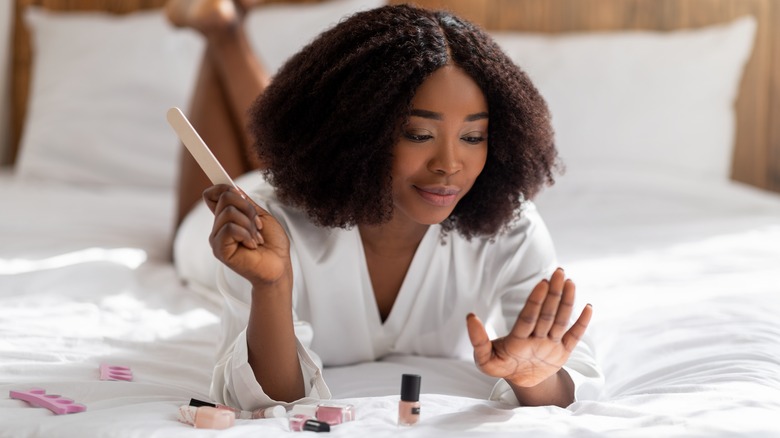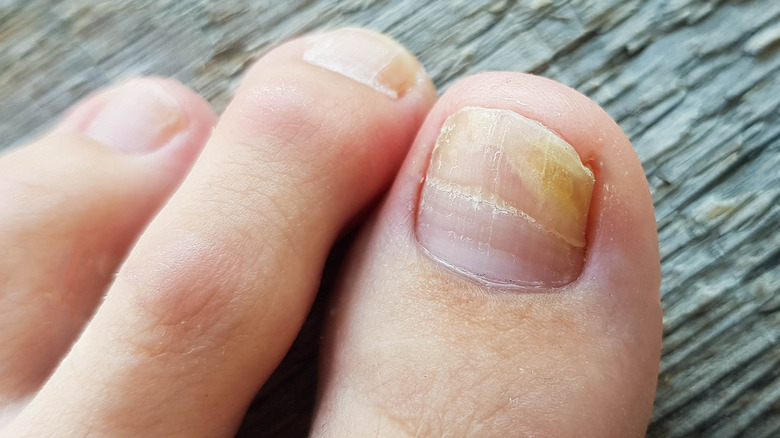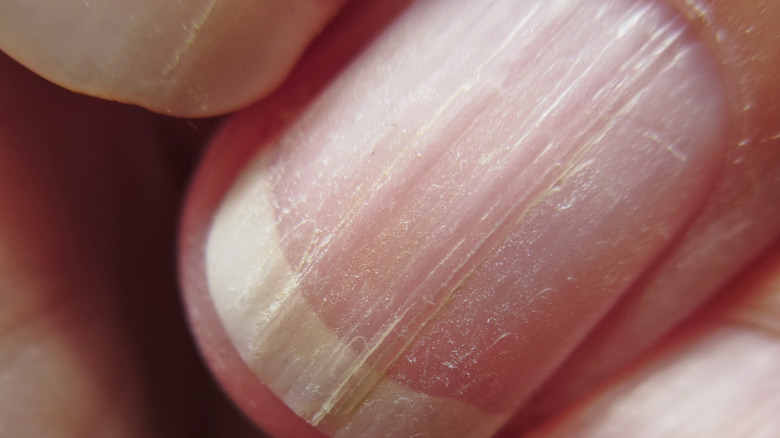Decoding Your Biggest Nail Problems (Because We've All Been There)
Trying out the latest nail trends is a quick, fun, and relatively inexpensive way to spruce up our look. Still, it's prudent to give our nails a break from all that polish and nail art once in a while. In fact, it's crucial for our health. How our bare nails look can clue us in on health issues we might be unaware of.
Ridges, white spots, black lines, grooves — more than just unsightly marks, these nail imperfections indicate underlying health conditions. Of course, injuries and fungal infections also result in nail discoloration and breakage, and both require medical attention. But for nail problems with less obvious sources, there are different possible causes behind them worth investigating.
Some issues require simple lifestyle changes as a remedy. Conversely, you may discover sufficient cause for concern that would compel you to consult with a medical expert. Regardless of how severe your nail problems are and what's causing them, awareness can only help you find and receive the right treatment — something that's more substantial and long-lasting than the aesthetic fix provided by the season's hottest nail trends.
What causes nail discoloration?
Sallow nails usually result from exposure to dyeing substances, such as self-tanners and cigarette tar. That's how every mani-pedi aficionado learns early on to apply a base coat to keep dark polish from staining their nails. For this problem, exposure reduction and soaking your nails in a hydrogen peroxide solution (one part hydrogen peroxide, two parts warm water) gradually bring back their natural pink color.
Fungal nail infection is also a common reason for yellow, thickened nails, due to the build-up of dead cells underneath. The Mayo Clinic recommends taking a dermatologist-prescribed oral medication to clear up the infection and help new, healthier nails grow.
Persistent and prolonged discoloration, however, indicates serious problems. Among them is Yellow Nail Syndrome, a rare genetic disorder that affects not just the nails but also the respiratory tract and lymphatic drainage; it has been linked to chronic sinusitis and bronchiectasis. Blue, brittle nails, meanwhile, are symptomatic of Raynaud's Disease, an uncomfortable condition where narrowed arteries provide limited blood and oxygen supply to the body's upper and lower extremities.
Pale nail beds usually signify anemia, but a particular condition that needs closer attention is when a narrow pink band sits at the tip of an otherwise white nail. Terry's Nails is usually attributed to aging, although research has also connected it to liver disease, congestive heart failure, kidney failure, and diabetes.
These conditions absolutely require expert treatment, not just to restore the nails' health but also to address their root causes.
Observe changes in your nails' texture
Rough and uneven nails tell us a lot about our bodies, too.
Slower cell turnover due to aging is the usual reason behind the appearance of vertical ridges. Iron deficiency is also a possible source, especially when the nails turn concave. Horizontal ridges, however, aren't as harmless. Called Beau's Lines, according to studies they're indicative of several disorders, from zinc deficiency to diabetes and even acute kidney disease. For pitted and grooved nails, psoriasis is a commonly cited cause. Still, it's best to get them examined since pitting can also signify other autoimmune diseases and connective tissue disorders.
While physical trauma causes breakage and bruising on the nail bed, brittle nails signal deeper problems. If they break easily or lift from the nail bed, a blood test can check for existing thyroid issues. Similarly, inexplicable dark marks or lines must be examined by a doctor. They could be signs of melanoma, a disease where early detection is crucial for successful treatment. Injury can also cause white spots on the nails, though these typically grow out within weeks or months. In comparison, pale horizontal bands called Muehrcke's Lines suggest either protein deficiency, kidney disease, or liver problems. A doctor's consultation can pinpoint their exact cause.
It is scary how a nail blemish could mean severe underlying ailments. However, understanding its real root is necessary information for improving our health and quality of life.
Besides, nail trends look best on smooth and healthy nails.


